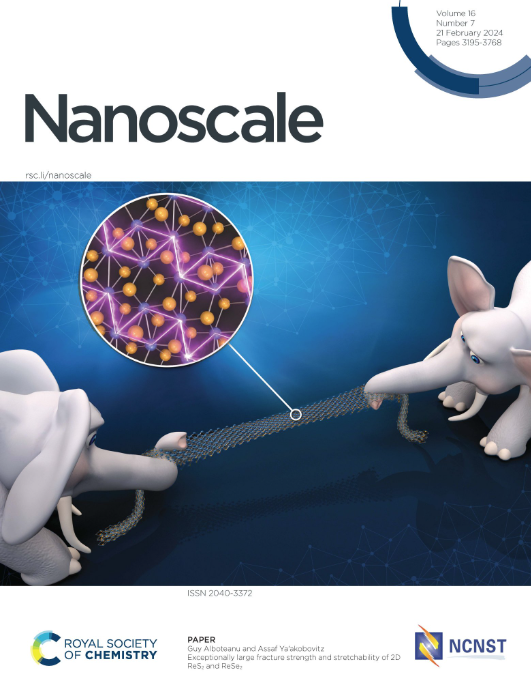Tunable hybridized plasmon-phonon in graphene/mica-nanofilm heterostructure
IF 5.8
3区 材料科学
Q1 CHEMISTRY, MULTIDISCIPLINARY
引用次数: 0
Abstract
Graphene plasmons exhibit significant potential across diverse fields, including optoelectronics, metamaterials, and biosensing. However, the exposure of all surface atoms in graphene renders it susceptible to surrounding interference, including losses stemming from charged-impurity scattering, dielectric environment, and substrate roughness. Thus, designing a dielectric environment with a long lifetime and tunability is essential. In this study, we created a van der Waals (vdW) heterostructure with graphene nanoribbons and mica nano-films. Through Fourier-transform infrared spectroscopy, we identified hybrid modes resulting from the interaction between graphene plasmons and mica phonons. By doping and manipulating the structure of graphene, we achieved control over the phonon-plasmon ratio, thereby influencing the characteristics of these modes. Phonon-dominated modes exhibited stable resonant frequencies, whereas plasmon-dominated modes demonstrated continuous tuning from 1140 to 1360 cm-1 in resonance frequency, accompanied by an increase in extinction intensity from 0.1% to 1.2%. Multiple phonon couplings limited frequency modulation, yielding stable resonances unaffected by gate voltage. Mica substrates offer atomic level flatness, long phonon lifetimes, and dielectric functionality, enabling hybrid modes with high confinement, extended lifetimes (up to 1.9 picoseconds), and broad frequency range (from 750 cm-1 to 1450 cm-1). These properties make our graphene and mica heterostructure promising for applications in chemical sensing and integrated photonics devices.石墨烯/云母-纳米薄膜异质结构中的可调谐杂化质子-声子
石墨烯等离子体在光电子学、超材料和生物传感等多个领域展现出巨大的潜力。然而,石墨烯所有表面原子的暴露使其容易受到周围干扰的影响,包括电荷杂质散射、介质环境和基底粗糙度造成的损耗。因此,设计一种寿命长、可调谐的介电环境至关重要。在这项研究中,我们用石墨烯纳米带和云母纳米薄膜创建了范德华(vdW)异质结构。通过傅立叶变换红外光谱,我们确定了石墨烯质子与云母声子相互作用产生的混合模式。通过掺杂和操纵石墨烯的结构,我们实现了对声子-等离子体比率的控制,从而影响了这些模式的特性。声子主导模式表现出稳定的共振频率,而等离子主导模式则表现出共振频率从 1140 厘米-1 到 1360 厘米-1 的持续调整,同时消光强度从 0.1% 增加到 1.2%。多重声子耦合限制了频率调制,产生了不受栅极电压影响的稳定共振。云母基底具有原子级平整度、长声子寿命和介电功能,使混合模式具有高约束、长寿命(高达 1.9 皮秒)和宽频率范围(从 750 厘米-1 到 1450 厘米-1)。这些特性使我们的石墨烯和云母异质结构有望应用于化学传感和集成光子器件。
本文章由计算机程序翻译,如有差异,请以英文原文为准。
求助全文
约1分钟内获得全文
求助全文
来源期刊

Nanoscale
CHEMISTRY, MULTIDISCIPLINARY-NANOSCIENCE & NANOTECHNOLOGY
CiteScore
12.10
自引率
3.00%
发文量
1628
审稿时长
1.6 months
期刊介绍:
Nanoscale is a high-impact international journal, publishing high-quality research across nanoscience and nanotechnology. Nanoscale publishes a full mix of research articles on experimental and theoretical work, including reviews, communications, and full papers.Highly interdisciplinary, this journal appeals to scientists, researchers and professionals interested in nanoscience and nanotechnology, quantum materials and quantum technology, including the areas of physics, chemistry, biology, medicine, materials, energy/environment, information technology, detection science, healthcare and drug discovery, and electronics.
 求助内容:
求助内容: 应助结果提醒方式:
应助结果提醒方式:


